Bihar: Assembly and council elections
(→Women candidates and women voter in Bihar Assembly polls) |
(→The NDA/ BJP campaign) |
||
| Line 65: | Line 65: | ||
Mohua Chatterjee | Mohua Chatterjee | ||
| | ||
| + | |||
'''With 26 rallies across five phases, PM led NDA campaign from front''' | '''With 26 rallies across five phases, PM led NDA campaign from front''' | ||
Revision as of 10:21, 8 November 2015
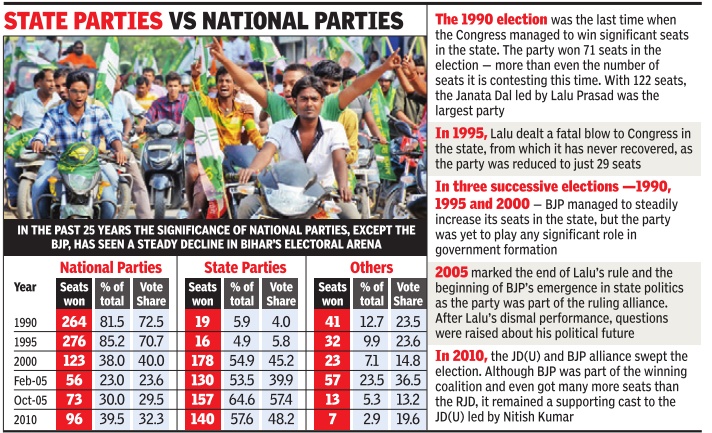
This is a collection of articles archived for the excellence of their content. |
Contents |
Bihar poll toppers: 1951-2010
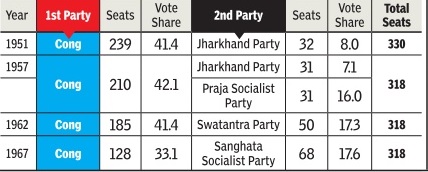
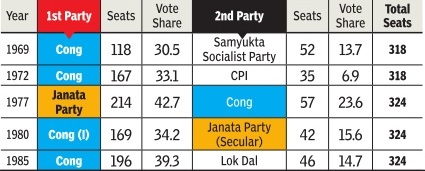
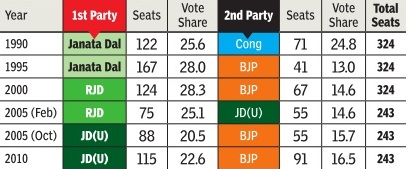

Bihar, Election trends, Assembly and Lok Sabha: 2005-2014
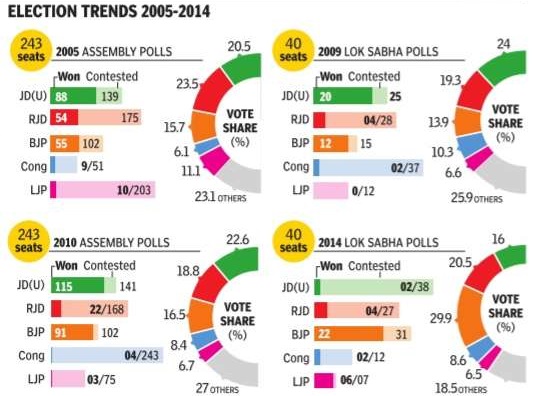

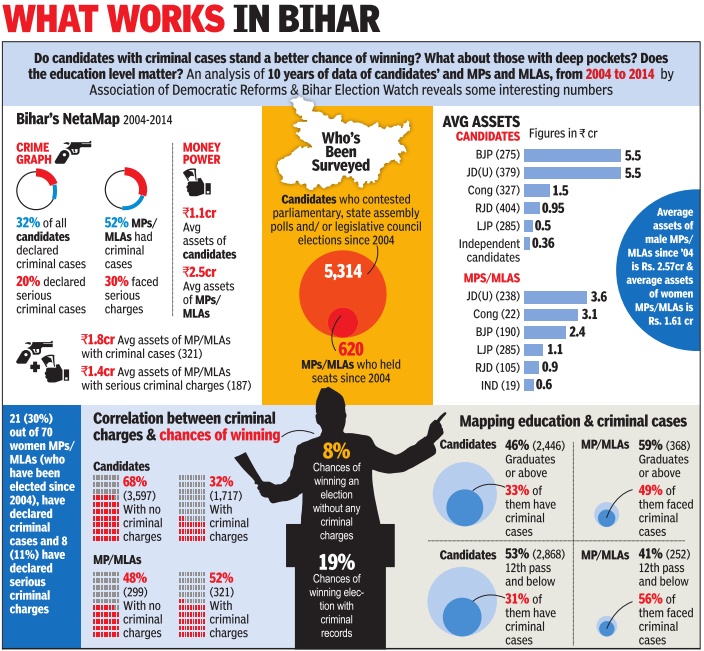
2010: Bihar Assembly election

2010 elections: Victory margins
The Times of India, Oct 06 2015
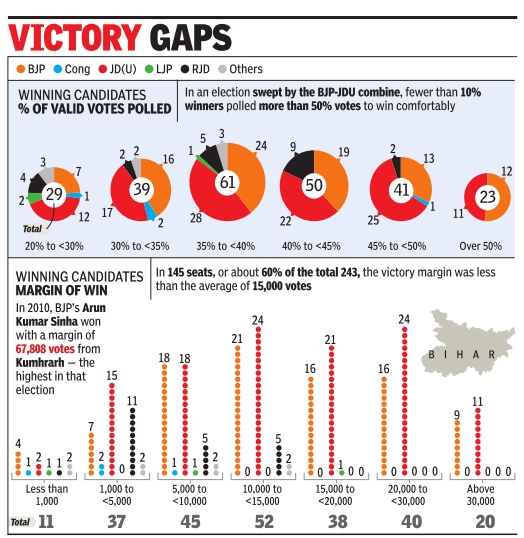
Atul Thakur 48 seats saw win margins under 5k in 1010
Several close calls can add up to an electoral sweep
Even a contest that is largely bipolar and pro duces a decisive verdict in a state need not produce decisive mandates from seat to seat, as the 2010 polls in Bihar illustrate. An analysis of the 2010 results shows that the onesided verdict in which the JD(U)-BJP combine won 206 of the 243 seats against just 25 for the RJD-LJP alliance nevertheless saw a lot of close seat level contests.
In fact, the winning candidate got a majority of the votes polled in less than 10% of the seats. BJP won in 12 of these constituencies while JD (U) won 11. There were another 91 constituencies where the winning candidate polled between 40% and 50% of the valid votes.Of these, 47 seats went to the JD (U) while the BJP and RJD won in 32 and 11 such seats respectively .
It is interesting to note that in more than half the seats in a largely bipolar contest the winning candidate got less than 40% of the votes. Indeed, there were 29 constituencies where the winner got less than even 30% of the votes polled. Despite sweeping the elections, the winning candidates of the JD(U)-BJP alliance were more or less evenly distributed across all these ranges.
The closeness of the contests at the seat level is revealed also in the victory margins in the 2010 elections. There were 48 constituencies where the victory margin was less than 5,000 votes. The JD(U) won 17 of these seats, the RJD 12 and BJP 11.This clearly sugBATTL gests that even a marginal swing in BI the votes could have thrown up a significantly different outcome in terms of party tallies, though the overall re sult would not have changed.
The average margin was about 15,000 votes. In 145 seats, or about 60% of the total, the vic tory margin was less than this average of 15,000 votes. Interest ingly, in the 98 conEGROUND stituencies where HAR the margin was higher than the av erage the winning alliance was successful in all but one.
It is also instructive to note that despite the essentially bipolar nature of the contest, 35.4% of the votes polled did not go to either of the two major combines.The Congress won 8.4% and smaller parties and independents mopped up a sizeable 27%.
Clearly, therefore, what is bipolar at the state-wide level can become quite multi-cornered at the micro level. That explains why so much effort goes into micro managing the details.
2010-14
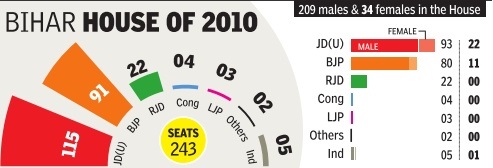

Women candidates and women voter in Bihar Assembly polls

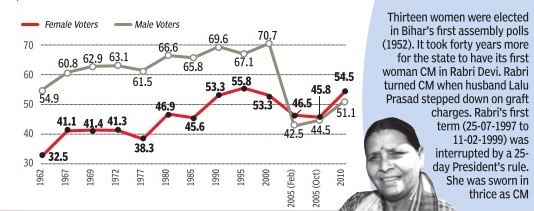
2015
The NDA/ BJP campaign
The Times of India, Nov 05 2015
Mohua Chatterjee
With 26 rallies across five phases, PM led NDA campaign from front
Prime Minister Narendra Modi addressed 26 rallies in Bihar as part of BJP's all-out effort to win the five-phase state polls that wrap up on Thursday . The Prime Minister was BJP-led NDA's star campaigner as the coalition went into the polls without a chief ministerial face -the PM pitched as the face of development instead.
PM Modi was pitted against JD(U) leader and Bihar chief minister Nitish Kumar, who led the grand coalition of JD(U), RJD and Congress.
BJP chief Amit Shah left nothing to chance and camped in the state for almost the whole of October, overseeing electoral preparations. He addressed 76 rallies in the state besides holding meetings of district leaders to ensure no small detail was overlooked.
A galaxy of central ministers, including foreign minister Sushma Swaraj, finance minister Arun Jaitley, telecom minister Ravi Shankar Prasad, who hails from the state, flew in to address rallies. But it was home minister Rajnath Singh who clocked the most miles, addressing over 50 rallies over the five phases.
In all, the NDA held between 28 and 32 rallies every day to win over voters in the state where BJP has never been the dominant coalition partner and, hence, never had a chief minister of its own.
BJP was part of the ruling coalition in the Nitish Kumar government for eight years before the chief minister broke away.